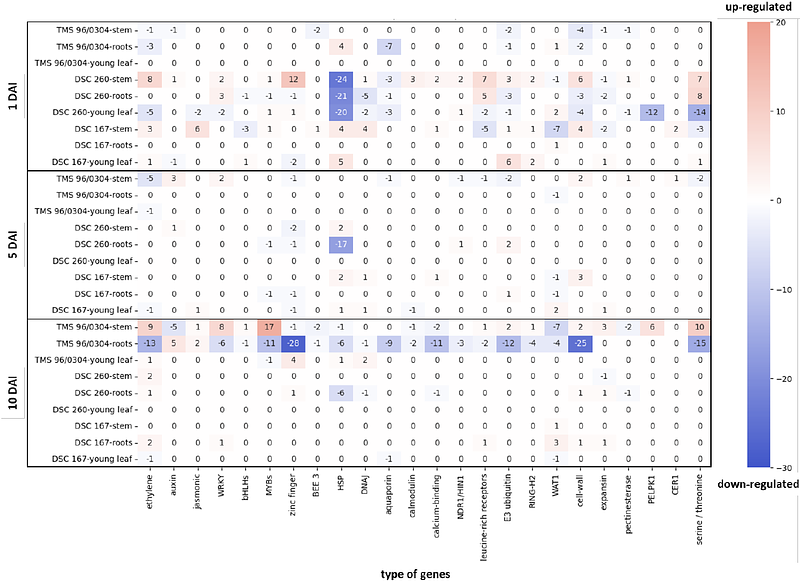Identification of immune response genes of cassava during early phases of cassava brown streak virus infection

Identification of immune response genes of cassava during early phases of cassava brown streak virus infection
Sheat, S.; Winter, S.; Lillenthal, J.; Pucker, B.
AbstractCassava brown streak disease (CBSD) caused by the ipomoviruses CBSV and UCBSV, poses a significant threat to cassava crops and the destruction of tuberous roots leads to substantial yield losses. Virus resistance identified in some South American cassava germplasm lines inhibits virus replication and movement and, is a complete immunity of some lines or, a restriction of the virus replication to phloem companion cells and root infection in others. To further explore the resistance responses and identify potential resistance genes, a time-course RNA-Seq study was conducted comparing gene ex-pression of a virus-susceptible cassava TMS 96/0304 with a cassava line restricting CBSV to the roots and a cassava DSC 167 (COL2182), immune to the virus. Differential gene expression patterns across leaves, stems, and roots revealed substantial differences between susceptible and resistant genotypes. Temporal analysis highlighted significant variations in the number of differentially expressed genes (DEGs), particularly in stem tissues at one day after inoculation (DAI), with notable overexpression observed in the resistant lines DSC 167 (436 DEGs) and DSC 260 (335 DEGs). In contrast, significant expression changes were noted only at 10 DAI in the virus infected TMS 96/0304 (737 DEGs). Several DEGs in resistant genotypes were associated with proteins involved in hormonal regulation, defense and immunity, transcriptional regulation, stress response, cell structure, and signal transduction. The analysis indicates that virus resistance in the studied lines is driven by early-stage regulation of genes for which specific functions remain to be elucidated.